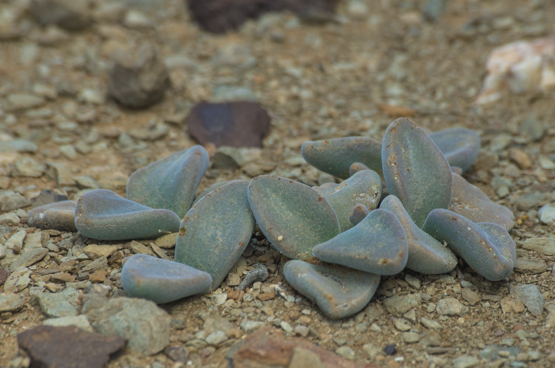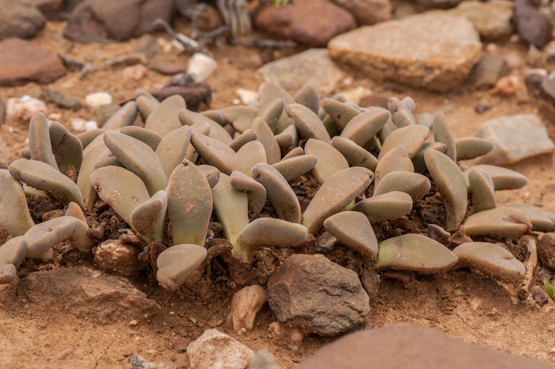Deilanthe comprises only three species and is usually incorporated in Aloinopsis.
D. hilmarii has erect leaves about as wide as thick.
D. peersii and D. thudichumii have more spreading and much wider leaves. They are in fact so similar that the Illustrated Handbook of Succulent Plants tells us that they are distinguished only by
–1 the fact that the flowers of D. thudichumii are open between 3 p.m. and 9 p.m. and those of D. peersii between 8 p.m. to 2 a.m.
— 2 some differences in flower morphology
— 3 different pollinators.
Not surprisingly, the book also suggests that D. thudichumii “may therefore be better placed as a subspecies in D. peersii”.
D. peersii, like its siblings, produces a very fat rootstock with quite short stems, each forming only one pair of velvety leaves per season. The plants occur from Laingsburg in the southwest to Fauresmith in the northeast. The rainfall is mostly in summer.
Although the species is widespread, it is not well known. It is probably often overlooked because the plants are low on the ground and the dark grey or brownish leaves are similar to the surrounding shale.
The first picture was taken near the eastern entrance to the Anysberg Nature Resereve (26 Sept. 2006). The other two show plants growing next to the road from Klaarstroom to Willowmore, just east of the provincial border (26 Dec. 2012).


